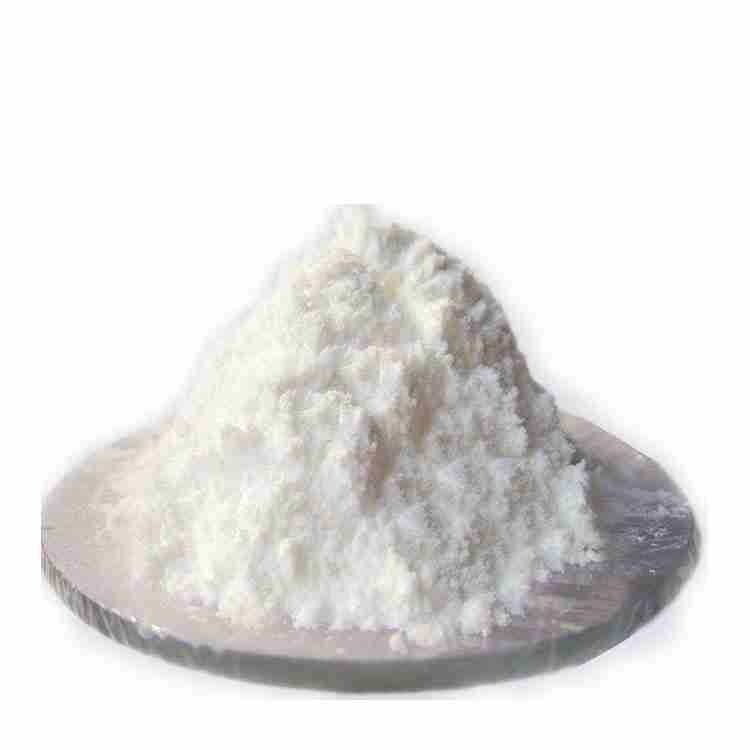Lauramidopropyl betaine CAS#4292-10-8
Lauramidopropyl betaine is a mild, biodegradable surfactant commonly used in personal care products and cleaning formulations. It is derived from coconut oil and is known for its foaming and wetting properties, making it ideal for creating rich lathers. This ingredient is particularly favored for its gentleness on the skin and its ability to cleanse without causing irritation, making it suitable for sensitive skin types. It also contributes to the product’s viscosity and stability.
发送询盘
| Lauramidopropyl betaine Chemical Properties |
| Melting point | >128??C (dec.) |
| density | 1.15[at 20??] |
| vapor pressure | 0.31Pa at 20?? |
| storage temp. | Hygroscopic, -20??C Freezer, Under inert atmosphere |
| solubility | Chloroform (Slightly), Methanol (Slightly) |
| form | Solid |
| color | White to Off-White |
| Water Solubility | 250mg/L at 20?? |
| Stability: | Hygroscopic |
| LogP | 3.54 at 20?? |
| EPA Substance Registry System | 1-Propanaminium, N-(carboxymethyl)-N,N-dimethyl-3-[(1-oxododecyl)amino]-, inner salt (4292-10-8) |
| Safety Information |
| MSDS Information |
| Lauramidopropyl betaine Usage And Synthesis |
| Description | Lauramidopropyl betaine is a new type of special amphoteric surfactant, which belongs to the same series as lauramidopropyl betaine, and is a modified derivative of alkyl betaine. Lauramidopropyl betaine has the characteristics of temperature resistance, acid and alkali resistance, good salt resistance, wide isoelectric point and strong viscoelasticity, etc. It is widely used in oil field oil repelling, leather, daily chemical industry and other fields. As a good viscoelastic surfactant applied to the substrate acidification of oilfield, it can effectively reduce the oil/water interfacial tension and improve the recovery rate of tertiary oil recovery. Also it can be used as conditioning agent, wetting agent, bactericide, antistatic agent, emulsifier, thickener and in self-steering acid system for carbonate acidification. |
| Uses | Lauroylamide Propylbetaine is used cosmetic and hair compositions of enhanced viscosity and clarity. |
| Flammability and Explosibility | Not classified |
| Toxicology | Lauramidopropyl betaine (50% component in cocamidopropyl betaine – as a model for cocamidopropyl betaine) is poorly absorbed from the intestinal tract and through the skin. Rinsing the skin after 10 minutes of contact reduces the absorption even further. Following oral or dermal exposure, there is metabolism of the absorbed material, as indicated by the appearance of a more polar compound in the urine and by the liberation of?14CO2. |
- 2
- 2-diallylpent-4-en-1-amine
- 4
- 95-16-9
- Ammonium sulfamate
- Benzothiazole
- cas:67889-00-3ح2
- cas:83524-75-8 | pigment black 32
- cas:928836-00-4 | 2
- cas:932745-70-5 | 4
- Chemical Minerals
- Coconut diethanolamide
- Daily Chemicals
- discount
- for sale
- General pvc resin
- hexyl D-glucoside
- in stock
- Lauramidopropyl betaine
- LAURIC ACID MONOETHANOLAMIDE
- Petroleum Additives
- Plasticiser
- Ploymers
- price
- PVC
- quotation
- Raw Materal
- Remove term: Petroleum Additives Petroleum Additive
- SODIUM ETHYL 2-SULFOLAURATE
Related Products
Chemical Name: Potassium Castorate
CAS No.: 8013-05-6
Molecular Formula: C57H107K3O12
Molecular Weight: 1101.74718
Appearance: Yellow Liquid
Chemical Name: Ammonium Iron(II) Sulfate
Synonyms: Diammonium iron bis(sulphate); iron (ii) ammonium sulfate
CAS No.: 10045-89-3
Molecular Formula: FeH5NO4S
Molecular Weight: 170.95
Chemical Name: 1,1,2,2-Tetrachloroethane
Other Name: Tetrachlorethane
CAS No.: 79-34-5
Molecular Formula: C2H2Cl4
Molecular Weight: 167.85
Appearance: Liquid
Product name:Cyclopentane
Purity:96%
Appearance:White powder
Package:25kg/bag
Sample:Available
Chemical Name: 3-Hydroxybutyric acid
CAS No.: 625-71-8
Molecular Formula: C4H8O3
Molecular Weight: 104.1
Appearance: White powder
Monostearin is a versatile emulsifier and emollient derived from glycerol and stearic acid. It is instrumental in stabilizing emulsions and enhancing the texture and consistency of a wide range of products in the cosmetics, food, and pharmaceutical sectors.
Coconut diethanolamide is a derivative of coconut fatty acids, where the fatty acid is reacted with diethanolamine to form an amide. This compound is commonly used as an emulsifier and viscosity modifier in personal care products such as shampoos, conditioners, and creams. It imparts a smooth texture and enhances the stability of formulations. Coconut diethanolamide is valued for its ability to improve the foaming properties and skin feel of products, making it a preferred ingredient for creating luxurious and effective formulations in the cosmetics and personal care industry.
Lauryl Glucoside is an eco-conscious non-ionic surfactant, derived from sustainable lauric acid and glucose. It offers superior mildness and biodegradability, making it an ideal choice for formulating gentle and effective cleaning agents in personal care and household products. Its bio-based nature aligns with the growing demand for green chemistry solutions.
Chemical Name: Arabic gum
CAS No.: 9000-01-5
Appearance: powder
Chemical Name: Choline salicylate
CAS No.: 2016-36-6
Molecular Formula: C12H19NO4
Molecular Weight: 241.28
Appearance: Red-Brown Crystal
Decyl Glucoside is an eco-friendly, non-ionic surfactant derived from renewable resources. Renowned for its mildness and biodegradability, it is ideal for creating gentle, high-performing cleaning agents in personal care and household products. Its sustainable and effective nature makes it a preferred choice for green formulations.
Chemical Name: Zinc citrate
Synonyms: Zinc citrate trihydrate
CAS No.: 546-46-3
Molecular Formula: C6H8O7Zn
Molecular Weight: 257.5
Appearance: White powder


















